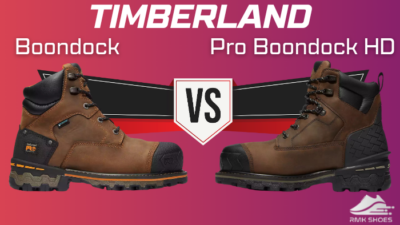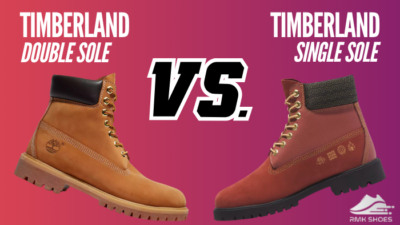Trainers, running shoes, or, tennis shoes– sneakers go by many names. From the early sports days to today’s glamour world, sneakers have been fashioned by both athletic and cultural trends.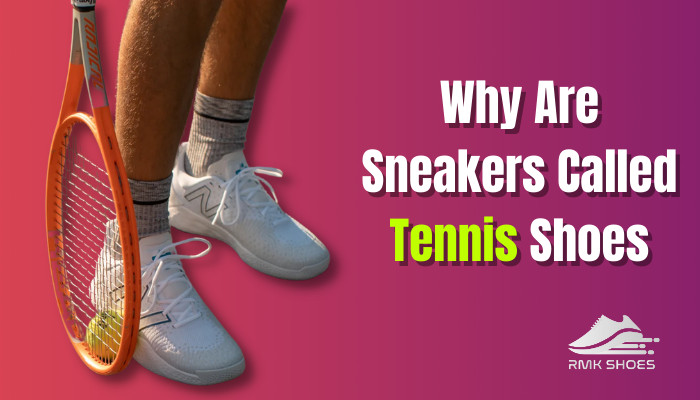
But have you ever wondered, what’s the ground behind their naming, why are sneakers even called tennis shoes? Well, the backstory is more interesting than you might think.
So, let’s lace up and uncover the history of sneakers and how they got the name “Tennis shoes”!
Why Are Sneakers Called Tennis Shoes?
Sneakers were actually invented for the British Royal Navy in the 18th century. But the wealthy started to wear this rubber-soled shoe for playing tennis, as it didn’t do any damage to the court yet provided comfort. Over time, sneakers became immensely popular and they began to call them tennis shoes. 
The term “Tennis Shoe” was first used to describe a specific type of shoe worn by tennis players, which has now evolved to include sneakers and other athletic shoes as well.
Now, the sneaker is vastly used for a variety of activities, from sports to casual wear. Also, they are available in a wide range of styles and designs, from classic low-top ones to high-tech performance-enhancing shoes.
But shoes weren’t the same as we see them today. From being the first invariable sneaker to today’s high-tech ones, there’s a long and fascinating story behind that journey.
Now, let’s dive into the history of tennis shoes!
Surprising History of Tennis Shoes
The first tennis shoe was invented in the late 18th century, primarily for the British Navy, as they needed shoes that don’t slip on the wet deck and are comfortable for long-term wear.
When the first soft-soled canvas sneakers came to the market in 1839 (called Plimsolls), they immediately caught the eyes of the affluent. In those days, tennis was gaining more popularity as a recreational sport among the rich.
As then, tennis was played on grass courts, players required a shoe that could provide good traction while they were running and changing direction. Because of the rubber sole and firm grip, they started to wear the newly marketed rubber-soled navy shoes on the tennis court, which met up all their needs. Hence, the name tennis shoes started roaming around. 
As to the construction, Charles Goodyear (an American chemist and manufacturing engineer) was the first one to introduce firm and heat-resistant shoes with vulcanized rubber. The very first pair were made with rubber soles and canvas upper, which made them a popular choice for athletes.
However, other shoe manufacturers also got interested in this vast popularity of tennis shoes and began to market their own sneakers with a slight modification of the previous one. This desire to upgrade the first shoe eventually paved the way for today’s popular brands like Adidas, Nike, and Puma.
Thereby, in 1900 the Rubber Company of the US released a modified version of Plimsolls “Keds”, and it became one of the most widespread tennis shoes of all time. And in 1930 Adidas introduced tennis shoes with a vast modification, they used leather instead of canvas to make the upper.
And thus the evolution of tennis shoes began.
Are All Sneakers Called Tennis Shoes?
No, not all sneakers we see around are tennis shoes. Though the very first sneaker eventually ended up on the tennis court and began to know as tennis shoes, they are not the same as the tennis shoes we see today.
In the mid-19th century, after noticing the massive popularity of tennis shoes among athletes, sneaker companies started to release athlete shoes dedicated to specific sports only. This gave birth to all the modern athletes’ shoes we can find today– from basketball shoes to simple running shoes.
However, you can not use the same shoes for all kinds of sports. The feature requirement for the footwear varies with the type of sport and the playground.
Likewise, tennis shoes are specifically designed for the sport of tennis. They have a flat sole and supportive structure to provide stability during quick lateral movements on the court. Durable materials like rubber, suede, and leather are used to withstand the wear and tear of the sport.
Sneakers, on the other hand, are used for a variety of activities like casual walking, running, or even for working out at the gym.
Simply, we can say, despite the fact that the terms, “sneakers” and “tennis shoes” are often used interchangeably, they do refer to slightly different things.
To know their major differences and more, check out our article on Tennis Shoes Vs Sneakers: The Main Difference.
What Makes A Sneaker Tennis Shoe?
Tennis shoes are sneakers developed specifically to wear on the tennis ground.
Till now, so far we have discovered the history of tennis shoes and the reason behind their name.
As said before, not all sneakers are tennis shoes, and they confer some distinct attributes. But what are the distinctive features?
Let’s find out the distinctive features of tennis shoes:
Feasible Design and Material
While playing tennis, you need to move both forward and sideways. That’s why shoes for tennis are stiffer than conventional sneakers.
In addition to that, these shoes feature a flat bottom with low-profile midsoles. 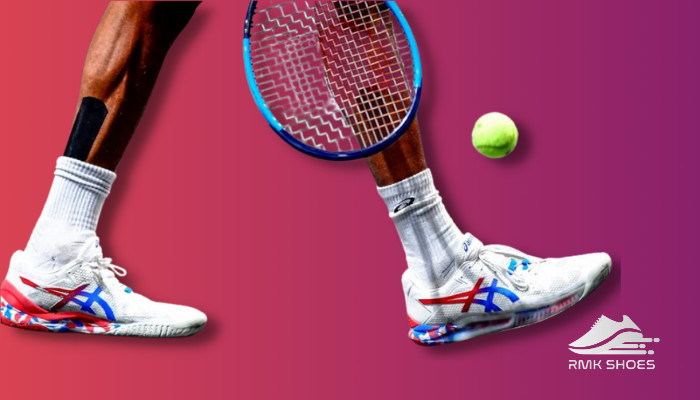
Tennis shoes are meant to wear for a long time, hence they are made of breathable uppers with high-quality materials like suede, canvas, or leather. For a perfect grip and swift movement, the shoes also offer a snug fit, while making the shoes comfy for the feet as well.
Cushion Support
As you can see, other athletic shoes, provide extra cushioning to absorb the shock impact of the ground while running or bouncing. But as in tennis, frequent jumping or landing hard on the ground is not needed, the sneakers for tennis have less cushioning than basketball shoes.
Still, they offer a moderate level of cushioning and arch support, making them suitable for a long match. Also, some tennis shoes are designed with a high ankle collar, providing more support to the feet.
Remarkable Sole Design
Tennis players need to move swiftly while making quick starts and stop. That’s why tennis shoes feature non-slip rubber soles with excellent grip for the required traction. 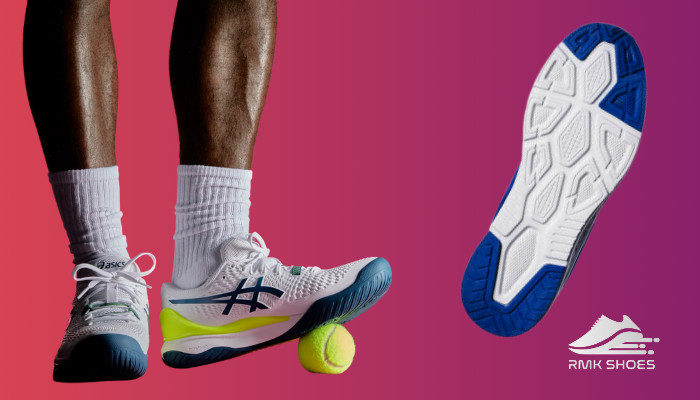
In addition to that, the outsole grip pattern is also optimized according to the playing grounds like– grass, clay, or hard surfaces.
Hard-court outsoles feature–
- Extra support for shock absorption.
- Optimized grip pattern for greater traction.
- Durable upper and sole material for abrasive court.
- Shoes can be light and swift or stiff and durable, both options are available.
Grass-court outsoles feature–
- Special bumps or pimples are added to the bottom for a better grip on slippery grass.
- As they lack other features, they are not suitable for other surfaces.
Clay-court outsoles feature–
- Full grip pattern to prevent slipping and for better traction on clay ground.
- Snug-fitted upper to avoid the unwanted clay entrance inside the shoes.
- Lateral support to prevent slip while sliding between shots.
Style
No matter what activities we do, style is the ultimate concern for every footwear enthusiast. And keeping this in mind, tennis shoes offer a wide range of designs and styles.
To find the ideal match, you should go with a suitable pair based on your style and level of play. For example, ultra-stable tennis shoes are suitable for an aggressive baseliner, while lightweight one is best for all court players, providing the utmost speed.
Although sneakers are abruptly called tennis shoes by many individuals, they differ from casual sneakers because of these unique facets.
Wrapping Up
As a staple footwear, sneakers have been around for more than a century now. And throughout the years, folks often referred to sneakers as gym shoes, tennis shoes, trainers, or whatever they like to call them.
Hopefully, with this article, all your confusion regarding this topic is gone.
Stay connected via a comment!

